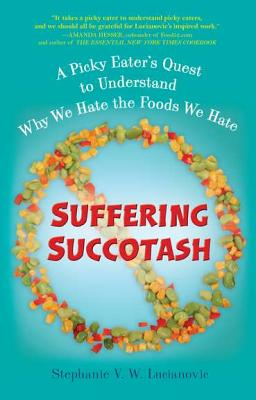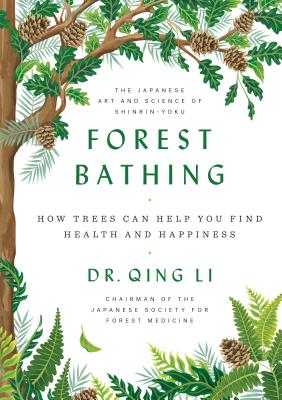It's been another fascinating year in the Healthy Readers Book Club. There are so many wonderful books out there that cover the topics of health, wellness, the environment, and holistic living. In some ways it can feel overwhelming because there are just so many books out there. Taking the time, however, to simply read one book at a time, it's amazing how many you can get through. This is the third year that I've had the bookclub; I find myself astonished at how much I've learned by spending time in the group and reading together.
For those who aren't aware of the Healthy Readers Book Club, it's an annotated book club where we typically read 10 books per year. The annotation part is me spending time looking up studies, asking questions, finding other information about what the author is talking about and sharing it with everyone. This year real life interfered and we wound up reading only nine books. It was still an adventure and we covered a lot of territory.
I've decided to do a brief overview of what we read. I'm not going to give star ratings, or assign the books any order of important ranking. After all, my perception, and understanding, of what we've read may be different than yours. However, some of these books were truly amazing and I want to share them with even more people than those in the book club.
Note: All the books have Bookshop.org links. I prefer Bookshop to larger booksellers because it supports small, independent booksellers. While I did not buy all of the books through Bookshop I do always look there first. And just like with any of the other booksellers, if you purchase a book using my link I do, at no extra cost to you, make a small commission.
Garbology: Our Dirty Love Affair with Trash by Edward Humes
An enlightening look at just how much garbage we generate. Often without realizing it. This books was a fascinating dive into the history of garbage in America and the way we don't see all the trash we make. While modern sanitation practices are good from a hygienic point of view, if you don't work in or live near a garbage dump, they also serve to make our trash nearly invisible. And not all communities handle their trash the same as others.
Some difference in trash collection were highlighted when I talked with my friend and colleague, Erin Knight.
I've learned that attention to how much trash we generate is an ongoing issue and needs to regularly be revisited.
The Big Fat Surprise: Why Butter, Meat, and Cheese Belong in a Healthy Diet by Nina Teicholz
I learned a lot about the science behind fat and consumption of it. This is a very detailed, thoroughly researched look at how we got to the whole low-fat/no-fat/fake-fat dietary theory that was promoted for decades. The author spent nine years researching the book. It may be a bit heavy for some readers but is definitely fascinating and informative.
Because I started with the same premise as the author, we need fat and that meat, cheese, and butter, are part of a healthy diet, I didn't make any changes based on what I read. I did, however, learn a lot about how the whole industry was upended.
Suffering Succotash: A Picky Eater's Quest to Understand Why We Hate The Foods We Hate by Stephanie V. W. Lucianovic
I'm fortunate in that I'm not a picky eater and none of my children were either. However I was amazed to learn how many people are and how challenging it can be to deal with in every day life. The author took us on her own person journey, including genetic analysis, visiting food labs, and interviewing feeding experts.
As with other health conditions, there can be complex reasons why people have picky palates. We often forget how we tend to perceive foods as simply being prepared one particular way. Especially if it’s a food that we think we don’t like.
One strategy the author shared was modifying the foods. By taking the time to find alternative ways to prepare foods we think we don’t like and give them new flavor profiles, or cooking them in a different way, or modifying the texture, we may actually find that we like them.
Forest Bathing: How Trees Can Help You Find Health and Happiness by Dr. Qing Li
I've always known that I love being among the trees. There's something peaceful and wonderful about that setting. And the opportunity to hug trees or even just caress them is always a good thing. Dr. Li talks about the scientific benefits of being among the trees. However it's even possible to “forest bathe” in a park or other natural setting.
We need a connection with nature and, unfortunately, many of us are spending too much time indoors. It's not healthy for us from a mental, physical, and emotional point of view. This book encouraged me to start a nature notebook and be more mindful of the time I spend outdoors.
I also had the opportunity to interview two Certified Forest Therapy Guides and we had a great chat about spending time in nature
Clean: The New Science of Skin by James Hamblin
The book starts with a startling admission by the author that he stopped showering five years ago. We are then taken on a very wild ride though the science and commercialization of skin care, cleanliness and hygiene. Plus we learned a lot about our microbiome. Even though all the media push is on the gut microbiome we have a skin microbiome (we actually have different microbiomes for different areas/parts of us).
While I'm am advocate of reading the label and being aware of environmental toxins, I learned to rethink some of the commercial messaging around skin care that we've all been exposed to.
I also interviewed my friend, colleague, and skin care expert Rachael Pontillo to get her thoughts
Tomatoland: How Modern Industrial Agriculture Destroyed Our Most Alluring Fruit by Barry Estabrook
Note: This book now has a third edition available: Tomatoland: From Harvest of Shame to Harvest of Hope. I have not read this third edition.
This was the hardest book I've read in the book club to date. The descriptions of modern slavery conditions and how tomatoes have come to be grown in Florida were quite disturbing. There was a lot of fascinating history about tomatoes themselves, but the manipulation required to grow them in a state with weather conditions that are not conducive to that type of produce was startling.
Once again I was struck by how tasteless and cardboard-like store-bought tomatoes are. There's a reason why fresh tomatoes are so mouthwateringly delicious. This reminded me of the quote by Lewis Grizzard, “It's difficult to think anything but pleasant thoughts while eating a homegrown tomato.”
And I'm determined to improve my ability to grow a larger crop of tomatoes in my home garden.
Combat Ready Kitchen: How the U.S. Military Shapes the Way You Eat by Anastacia Marx de Salcedo
Easily the most startling book we read all year, this book shared astounding information about just how much our food purchases are influenced by the needs of the military. Food choices that are all around us and seem to ordinary and every day.
One mind-boggling example is when you stop to realize that the process of canning food for preservation has only been around since 1803. The idea of preserving food in glass was originally invented by a young French confectioner named Nicholas Appert who came up with the idea in response to Napoleon Bonaparte‘s offer of a prize for anyone who could figure out how to preserve food to take with the military on campaign.
Even protein bars, lunch meat, and more; these are military-inspired items we don’t necessarily think about that have become part of our everyday. It makes you look at the aisles of the grocery store very differently.
The Town That Food Saved: How One Community Found Vitality in Local Food by Ben Hewitt
This book was a heartfelt look at what is possible with food when we give the power for it's production back to the people that actually work the land. It was a thought-providing exploration of how food production has become so decentralized and how difficult it is for farmers to make a living.
It was also interesting to read how much farmers need to diversify and create cross-production models in order to have a viable farm. One interesting example in the book was a dairy farm that began to grow sunflowers in order to create biofuel for their equipment.
Although it focused primarily on one area of the country, Hardwick, Vermont, it's not difficult to see how this model could spread to other areas with focus on decentralized food production instead of the current model of global planning and production. However the book clearly pointed out that the farmers are only part of the equation. They need their consumer partners to support them in order for both parties to enjoy the benefits of the farm labors.
Gulp: Adventures on the Alimentary Canal by Mary Roach
The funniest book we read all year, this book was both highly educational and immensely entertaining. It turns out there's a lot more going on inside us than we realize. Her efforts to put herself in the middle of the experiments and to actually experience many of these things as personally as possible is, quite frankly, more than a little mind-boggling. The discussions aren't limited to humans either, as she talks about dogs, cats, seabirds, cows, mice, etc. By the way, rodents aren't the only ones who are slaves to sugar, so are humans.
I have a particular way I annotate non-fiction books when I read them. You can see the video below. This book had more smilies than any book I've ever read before. If for nothing else than the laughs, this is definitely worth reading. This was my favorite book of the year.
The book for February is The Food Explorer: The True Adventures of the Globe-Trotting Botanist Who Transformed What America Eats
Did you ever think about where food comes from? How is it that in the everyday American grocery store we think nothing of eating locally grown kale but don’t realize it originally came from Croatia. Or mangoes from India? Or avocados from Chile? It turns out many of the foods we think of as regular options exist in America thanks to David Fairchild, a globe-trotting botanist who transformed the food culture in America.
Read along with us—join the Healthy Readers Book Club!












